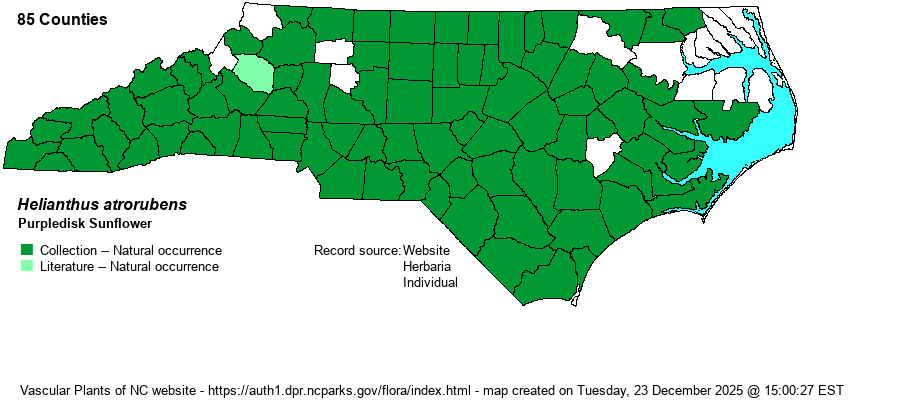| Author | L. | |
| Distribution | Throughout the state; apparently scarce in the northeastern corner and absent from the Outer Banks.
VA and KY south to FL and LA. | |
| Abundance | Common in the Piedmont and most of the Coastal Plain; fairly common to common in the Mountains, except less numerous in the northern Mountains. Very rare to absent in the northeastern Coastal Plain. Unlike most other sunflowers, it usually occurs as single plants or small populations. | |
| Habitat | Dry-mesic sandy, clayey or rocky soil of woodlands and open forests, pinelands, borders and roadbanks, clearings, and powerlines. | |
| Phenology | Flowering and fruiting late July-October. | |
| Identification | Purpledisk Sunflower typically grows 2-5.5 feet tall from ovate, toothed, stalked, basal and lower leaves. Stem leaves typically are 3-6 (-8) pairs, smaller and narrower than lower ones. Heads are few to several from long stalks, with yellow rays and deep red-purple-brownish disks. Variableleaf Sunflower (H. heterophyllus) has even fewer stem leaves, which are much smaller and narrower than basal ones. Purpledisk Sunflower is an easily identified species away from savannas, as it has a nearly "naked" stem and strongly purple-brown disk. | |
| Taxonomic Comments | None
| |
| Other Common Name(s) | Dark-eyed Sunflower | |
| State Rank | S5 | |
| Global Rank | G5 | |
| State Status | | |
| US Status | | |
| USACE-agcp | | |
| USACE-emp | | |

